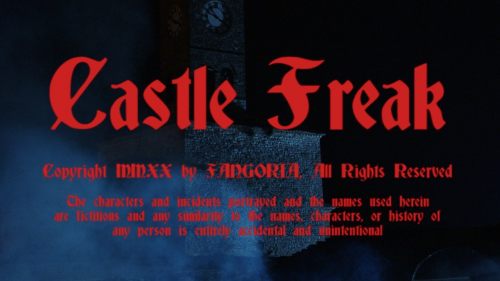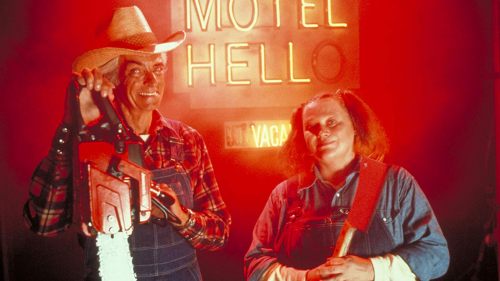OUR LADY OF THE INFERNO Book Review: Add A Slasher For Good Measure
The key to any memorable piece of horror fiction is in its iconography. Jason has his mask and machete, Freddy has the bladed glove and his signature sweater, and the Xenomorph is perhaps the most instantly emblematic and recognizable of H.R. Giger's monstrous designs. This is a lesson that author Preston Fassel has taken to heart in developing the antagonist of his first novel, Our Lady of the Inferno. Nicolette Aster is a terrifying monster, a stealth sociopath who engages in the ritual murder of prostitutes in a labyrinth she has built in the Long Island Landfill, appeasing the overbearing spirit of 1983's New York City by adorning Minotaur-inspired armor to become a vessel of immense strength and madness. Nicolette's psychology is fascinating to explore, and the brutality of her violence is worthy of any midnight movie, which makes her place in the plot of Our Lady of the Inferno somewhat baffling in how it's nearly unnecessary.
Despite getting numerous passages from Nicolette's perspective, it would be disingenuous to call her a co-protagonist, even though she could be seen as the primary draw for potential readers. The honor of main character goes to Ginny Kurva, a twenty-one-year-old prostitute who acts as madam to a group of teenage girls under the so-called protection of their drunk and abusive pimp, The Colonel. Ginny is a smart, driven woman, motivated by raising her younger sister through adolescence and using her place of limited influence with The Colonel to provide her fellow sex workers with a modicum of education so that they may have a chance to one day leave their slum existence. However, the strain of being the source of support for so many – many of whom fall victim to circumstances Ginny feels partially responsible for – has pushed Ginny to the verge of insanity, with alcohol acting as her only coping mechanism, and even that is starting to only make things worse as she gradually falls apart.
As a character study, Ginny is an engaging lead, and it's nice to see that Fassel has a reasonably sex-positive perspective toward sex work. Ginny and the other prostitutes of The Colonel's harem don't want to be doing what they're doing, but across the board, they recognize it as a necessity of survival in a city that won't afford them other opportunities, so it's a job to be undertaken with responsibility and safety without romanticism. But continually offering one's sexuality as a commodity does have deleterious effects on someone who hopes to have romantic relationships one day – at least in a society like ours where sex workers are labeled lifelong pariahs – so as Ginny sees the walls of her constructed life closing in around her, refusing her a future she fights so hard to ensure that other women in her situation might one day have, it's fascinating to watch her grapple with that denial of self.
You might be asking yourself where serial killer Nicolette Aster fits into all this, and the answer is that she kind of doesn't. She is a constant presence in the narrative, an obsessive stalker of Ginny and her girls, and she even has a subplot about seeking vengeance on a coworker for coming too close to her secret life. But so far as Nicolette and Ginny coming to heads in any significant way, a confrontation doesn't occur until the final pages of the book, and by this point, Ginny has had a full character arc completely independent of Nicolette's influence in the background. It's arguable that the rumors of a serial killer attacking prostitutes are an inciting incident for key decisions made by Ginny and others throughout the narrative, but this is mostly just an impetus for Ginny to deal with the much more direct threat posed by The Colonel. And that's a shame because while Ginny's story feels nearly complete without Nicolette, Nicolette herself is an interesting enough character that she deserves her own narrative, one in which she faces off against an opponent that serves as more than a vague benchmark of obligatory catharsis.
On the whole, Our Lady of the Inferno is an enjoyable read, dripping in 1980s nostalgia and providing a lurid look at the world of survival sex work that neither glamorizes nor demonizes. It's a great character study for its ostensible lead, and it even manages to be pretty funny in moments of levity. But while the novel's ostensible antagonist is fascinating, one can't help but wonder how Nicolette Aster would flourish in a story where she didn't feel so shoehorned in. Even so, for as much of Our Lady of the Inferno seems to be of two minds, both perspectives it offers are very entertaining, and this writer looks forward to seeing what Preston Fassel comes up with next.



